Themed collection Materials for Energy storage

Pt-based nanoparticles on non-covalent functionalized carbon nanotubes as effective electrocatalysts for proton exchange membrane fuel cells
This review presents the latest progress in the development of non-covalent functionalized CNT supported Pt-based electrocatalysts for fuel cells.
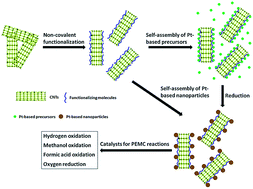
RSC Adv., 2014,4, 46265-46284
https://doi.org/10.1039/C4RA05120C
Nanoalloy catalysts for electrochemical energy conversion and storage reactions
A key challenge to the exploration of electrochemical energy conversion and storage is the ability to engineer the catalyst in terms of composition, morphology, and structure towards low cost, high activity and high stability.
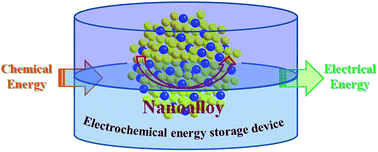
RSC Adv., 2014,4, 42654-42669
https://doi.org/10.1039/C4RA05943C
Carbon electrodeposition in molten salts: electrode reactions and applications
Carbon dioxide can be electrochemically reduced to carbon in molten carbonate salts, promising affordable energy, materials and environmental explorations.
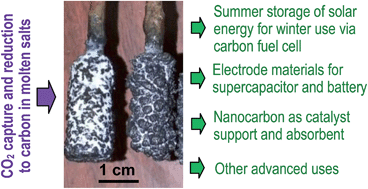
RSC Adv., 2014,4, 35808-35817
https://doi.org/10.1039/C4RA04629C
Proton-conducting polymer electrolytes and their applications in solid supercapacitors: a review
Research on solid supercapacitors over the last few years has aimed to provide high performing and safely operating energy storage solutions for the fast growing application areas of consumer and micro-electronics, providing printable, flexible and wearable devices.
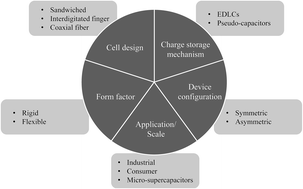
RSC Adv., 2014,4, 33091-33113
https://doi.org/10.1039/C4RA05151C
Chemical bonding in amorphous Si-coated carbon nanotubes as anodes for Li ion batteries: a XANES study
The Si–O–C bonding and its evolution upon electrochemical cycling in a Si-coated carbon nanotube anode are unveiled by X-ray absorption spectroscopy studies.
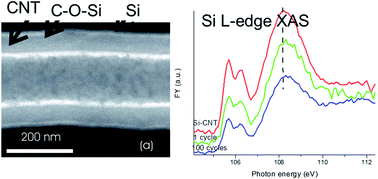
RSC Adv., 2014,4, 20226-20229
https://doi.org/10.1039/C4RA01332H
Mesoporous manganese-deficient lithium manganese silicate cathodes for lithium-ion batteries
A manganese-deficient lithium manganese silicate cathode is synthesised by an emulsion synthesis route, using mesoporous silica as a template, to give a mesoporous product with excellent electrochemical reversibility in lithium cells.
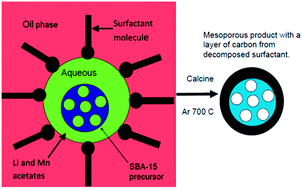
RSC Adv., 2014,4, 11580-11584
https://doi.org/10.1039/C3RA47730D
Bi2S3 nanorods modified with Co(OH)2 ultrathin nanosheets to significantly improve its pseudocapacitance for high specific capacitance
α-Co(OH)2 modification is used to boost Bi2S3 for higher specific capacitance while improving the cycle life stability.
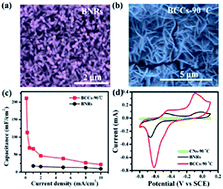
RSC Adv., 2014,4, 48666-48670
https://doi.org/10.1039/C4RA05763E
Use of amine electride chemistry to prepare molybdenum disulfide intercalation compounds
A new intercalation mechanism is identified when electride solutions in ethylenediamine are used to generate MoS2 intercalation compounds.

RSC Adv., 2014,4, 47121-47128
https://doi.org/10.1039/C4RA07405J
Aqueous CO2 reduction on morphology controlled CuxO nanocatalysts at low overpotential
The CuxO180-2 catalyst obtained with 3D hierarchical nanosphere structures could catalyze CO2 reduction in aqueous solution with very high catalytic activity and superb selectivity of produced formate, significantly outperforming CuxO catalysts without such special morphology.
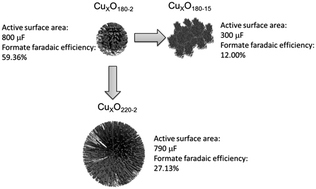
RSC Adv., 2014,4, 44583-44591
https://doi.org/10.1039/C4RA09442E
Synthesis of a hierarchically meso-macroporous TiO2 film based on UV light-induced in situ polymerization: application to dye-sensitized solar cells
Hierarchically meso-macroporous TiO2 films were prepared via a UV light-induced in situ polymerization of hybrid organic–inorganic films containing propoxylated glyceryltriacrylate monomers and titania precursors.
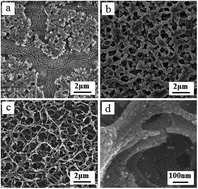
RSC Adv., 2014,4, 44692-44699
https://doi.org/10.1039/C4RA05174B
Electrospun activated carbon nanofibers for supercapacitor electrodes
Porous carbon nanofibers for supercapacitor electrodes have been made by in situ H3PO4 activation.
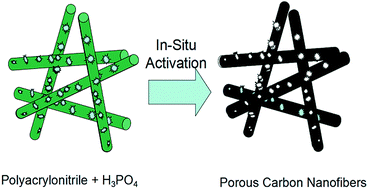
RSC Adv., 2014,4, 43619-43623
https://doi.org/10.1039/C4RA05512H
Pd–Pt nanostructures on carbon nanofibers as an oxygen reduction electrocatalyst
A new oxygen reduction catalyst is made of Pd and Pt nanostructures (Pd–Pt) supported on a herring-bone arrangement of carbon nanofibers (NFs) and is synthesized in one pot by the sequential reduction of Pd2+ and Pt4+ in aqueous chloride solution with ethylene glycol and then adding the carbon NF to precipitate the catalyst.
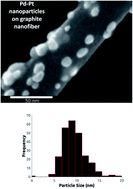
RSC Adv., 2014,4, 42009-42013
https://doi.org/10.1039/C4RA06507G
Enhancing the lithiation rate of silicon nanowires by the inclusion of tin
Tin is incorporated into silicon nanowires to significantly improve their rate capability in lithium-ion battery anodes, alleviating the need for conductive carbon additives.
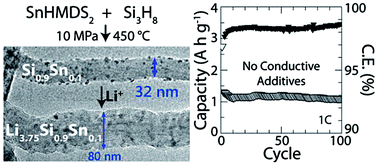
RSC Adv., 2014,4, 42022-42028
https://doi.org/10.1039/C4RA07418A
Morphology and performance of poly(ether sulfone)/sulfonated poly(ether ether ketone) blend porous membranes for vanadium flow battery application
Poly(ether sulfone) (PES) porous membranes with tunable morphology were fabricated and applied in a vanadium flow battery (VFB).
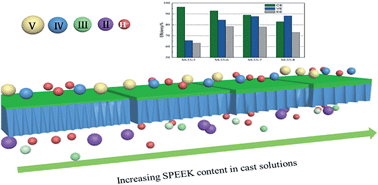
RSC Adv., 2014,4, 40400-40406
https://doi.org/10.1039/C4RA05083E
A high performance xylose microbial fuel cell enabled by Ochrobactrum sp. 575 cells
A new bacterium, Ochrobactrum sp. 575, is applied as a high performance MFC while resolving xylose, and the formation of fumaric acid is observed during the discharging process.
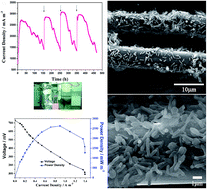
RSC Adv., 2014,4, 39839-39843
https://doi.org/10.1039/C4RA05077K
Mass production of Li4Ti5O12 with a conductive network via in situ spray pyrolysis as a long cycle life, high rate anode material for lithium ion batteries
Nanocrystalline Li4Ti5O12 was synthesized by an in situ spray pyrolysis technique followed by heat treatment in N2 for short periods of time, resulting in self-contained carbon originating from the organic synthetic precursors. The excellent high rate capability and full battery tests indicate that this is a promising 4 anode candidate for high power lithium-ion batteries.
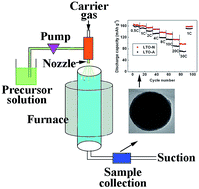
RSC Adv., 2014,4, 38568-38574
https://doi.org/10.1039/C4RA05178E
Facile synthesis of nitrogen-doped carbon derived from polydopamine-coated Li3V2(PO4)3 as cathode material for lithium-ion batteries
Nitrogen-doped, carbon-coated Li3V2(PO4)3 cathode materials were prepared by the oxidative self-polymerization of dopamine on the Li3V2(PO4)3 surface and subsequent carbonization of polydopamine.

RSC Adv., 2014,4, 38791-38796
https://doi.org/10.1039/C4RA05089D
Vacuum-annealing-tailored robust and flexible nanopore-structured γ-Fe2O3 film anodes for high capacity and long life Na-ion batteries
γ-Fe2O3 film was grown directly on a copper sheet with radio frequency magnetron sputtering as an anode for Na-ion batteries. Results show that the γ-Fe2O3 film annealed at 600 °C delivers a high reversible capacity of 450 mA h g−1 and retains nearly 100% of capacity over 100 charge–discharge cycles.
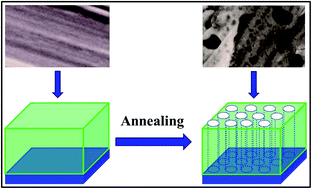
RSC Adv., 2014,4, 36815-36820
https://doi.org/10.1039/C4RA04686B
Graphene networks for high-performance flexible and transparent supercapacitors
Graphene network (GN) was synthesized by a two-step chemical vapour deposition (CVD) method, involving the thermal annealing sputter-coated Cu film to form a Cu network by annealing for CVD deposition of graphene onto the Cu network catalyst.
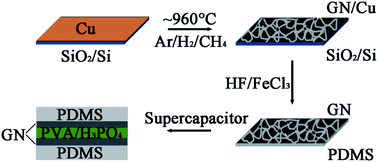
RSC Adv., 2014,4, 36996-37002
https://doi.org/10.1039/C4RA05076B
Electroanalytical study of the viability of conversion reactions as energy storage mechanisms
Electroanalytical techniques indicate that voltage hysteresis in electrochemical conversion reactions has thermodynamic origins, which highlights the significant challenge to their prospects of application.
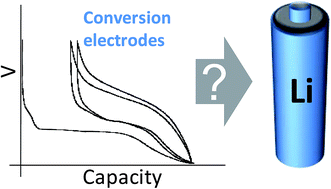
RSC Adv., 2014,4, 35988-35996
https://doi.org/10.1039/C4RA05189K
Easy approach to synthesize N/P/K co-doped porous carbon microfibers from cane molasses as a high performance supercapacitor electrode material
For the first time, porous carbon microfibers co-doped with N/P/K were synthesized from cane molasses by combination of electrospinning and carbonization techniques and its electrochemical application to electrode materials for supercapacitors was investigated.
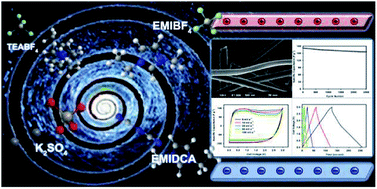
RSC Adv., 2014,4, 34739-34750
https://doi.org/10.1039/C4RA05243A
MnO2-assisted fabrication of PANI/MWCNT composite and its application as a supercapacitor
MnO2 has been used as a sacrificial template to fabricate a core-shell structured polyaniline/multi-walled carbon nanotube composite.

RSC Adv., 2014,4, 33569-33573
https://doi.org/10.1039/C4RA04905E
A comparison of carbon supports in MnO2/C supercapacitors
This article presents the influence of three carbons on the capacitive performance of MnO2/C composites with same MnO2 active material.
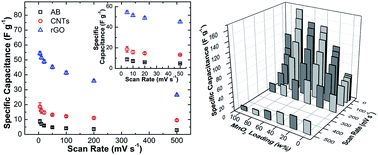
RSC Adv., 2014,4, 31416-31423
https://doi.org/10.1039/C4RA04914D
Synthesis of sodium manganese oxides with tailored multi-morphologies and their application in lithium/sodium ion batteries
Sodium manganese oxides (SMO) with different crystal structures have been synthesized by high-temperature solid-state reaction (HTSSR), in which both morphology and crystal structure of SMO can be well-controlled by synergistic effects of both the ratio of sodium-to-manganese and the heat-treatment temperature.
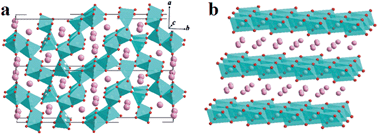
RSC Adv., 2014,4, 30340-30345
https://doi.org/10.1039/C4RA03735A
Layer-by-layer self-assembly of Nafion–[CS–PWA] composite membranes with suppressed vanadium ion crossover for vanadium redox flow battery applications
CS–PWA–Nafion composite membranes were successfully synthesized via a layer-by-layer self-assembly technique. They exhibited low vanadium ion permeability and improved comprehensive performance in VRFBs.
![Graphical abstract: Layer-by-layer self-assembly of Nafion–[CS–PWA] composite membranes with suppressed vanadium ion crossover for vanadium redox flow battery applications](/en/Image/Get?imageInfo.ImageType=GA&imageInfo.ImageIdentifier.ManuscriptID=C4RA01775G&imageInfo.ImageIdentifier.Year=2014)
RSC Adv., 2014,4, 24831-24837
https://doi.org/10.1039/C4RA01775G
A novel SnS2@graphene nanocable network for high-performance lithium storage
A unique SnS2@graphene nanocable structure for high-performance lithium storage with a novel contact model between SnS2 nanosheets and graphene.
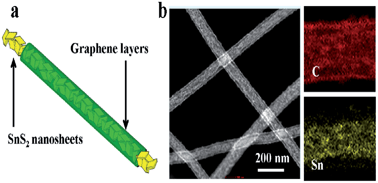
RSC Adv., 2014,4, 23372-23376
https://doi.org/10.1039/C4RA03052D
A hierarchical porous graphene/nickel anode that simultaneously boosts the bio- and electro-catalysis for high-performance microbial fuel cells
A three-dimensional graphene/nickel composite electrode with a hierarchical porous structure is developed to simultaneously boost the bio- and electro-catalysis for high-performance microbial fuel cells.
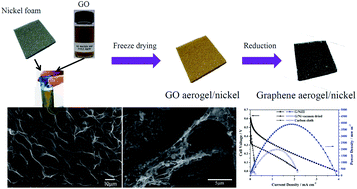
RSC Adv., 2014,4, 21788-21793
https://doi.org/10.1039/C4RA03082F
Directly hydrothermal growth of ultrathin MoS2 nanostructured films as high performance counter electrodes for dye-sensitised solar cells
Ultrathin MoS2 nanostructured film with surface layered nanosheet structure was directly grown onto FTO conductive substrate by a facile hydrothermal method, exhibiting great potential for solar energy conversion application.
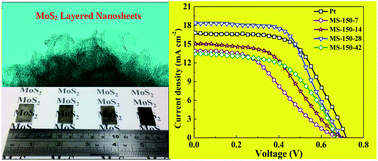
RSC Adv., 2014,4, 21277-21283
https://doi.org/10.1039/C4RA00583J
Porous SnO2 nanocubes with controllable pore volume and their Li storage performance
SnO2 nanocubes with controllable pore volume show the best Li storage performance.
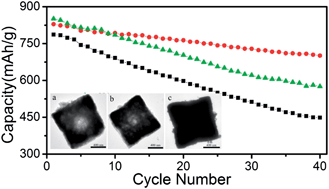
RSC Adv., 2014,4, 13250-13255
https://doi.org/10.1039/C4RA00362D
About this collection
Welcome to this themed collection ‘Materials for Energy storage,’ Guest Edited by Professor Chang Ming Li (Southwest University, China). The articles here present a broad range of materials for energy storage, in particular for sustainable clean energies such as Li batteries, supercapacitors, fuel cells and solar cells. This collection not only demonstrates various novel methods to tailor nanoscale materials in both physical structure and chemical composition for superior performance of energy storages, but also explore the fundamental insights for the relation of energy storage versus the nanostructure of the materials to advance nanoscience. These excellent works powerfully illustrate the beauty of nanoscience for engineering super materials while showing great promise for solutions to overcome the fast depletion of fossil fuels and environmental contamination issues.